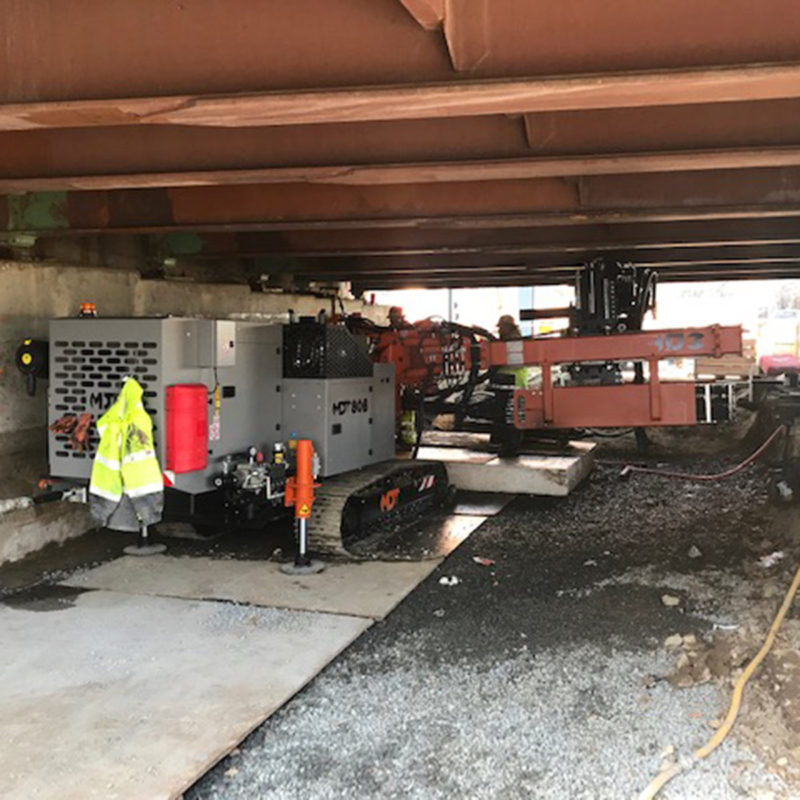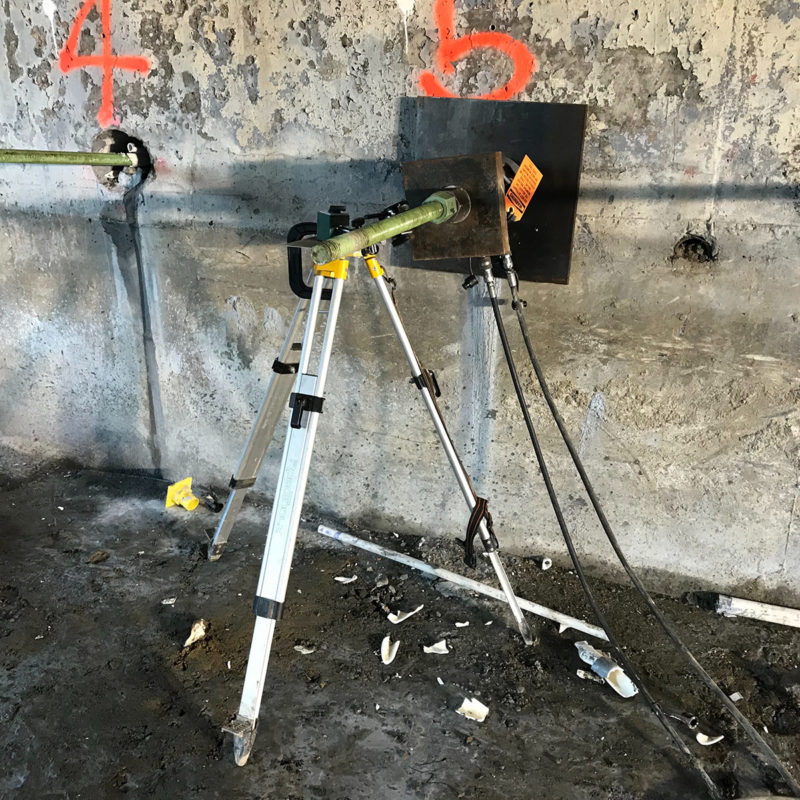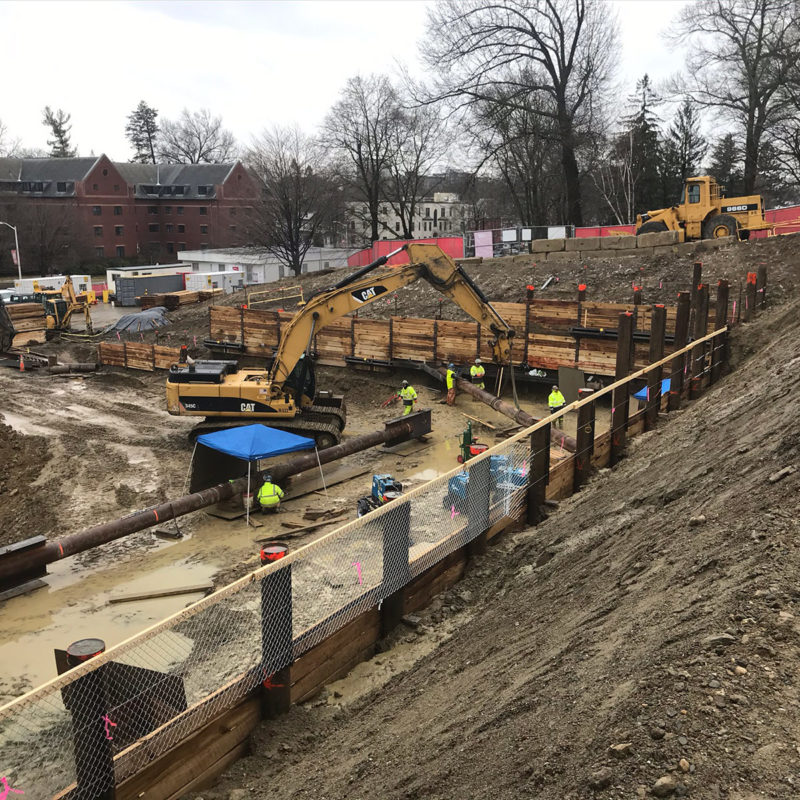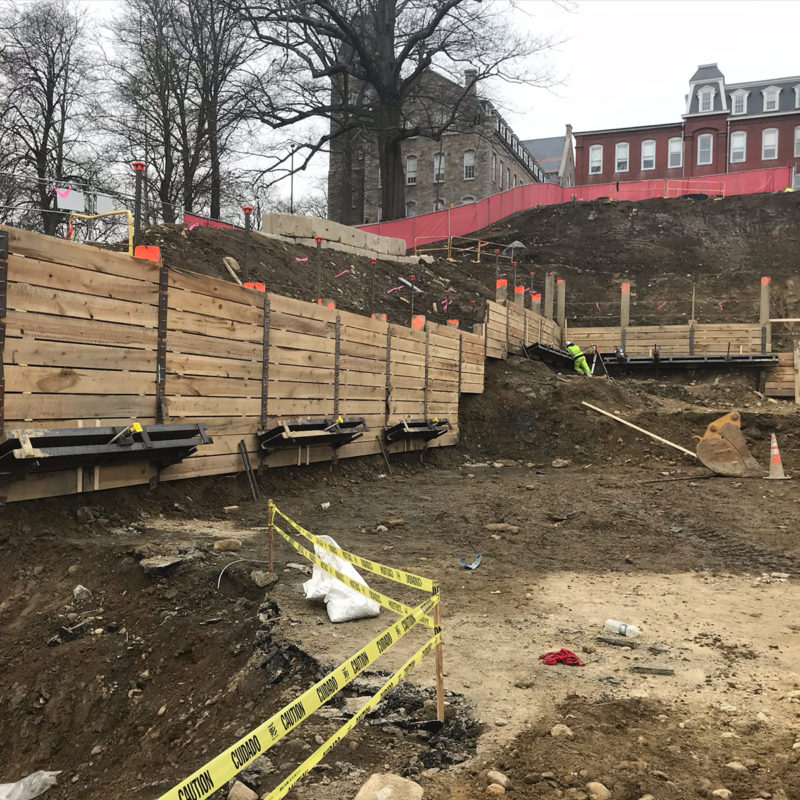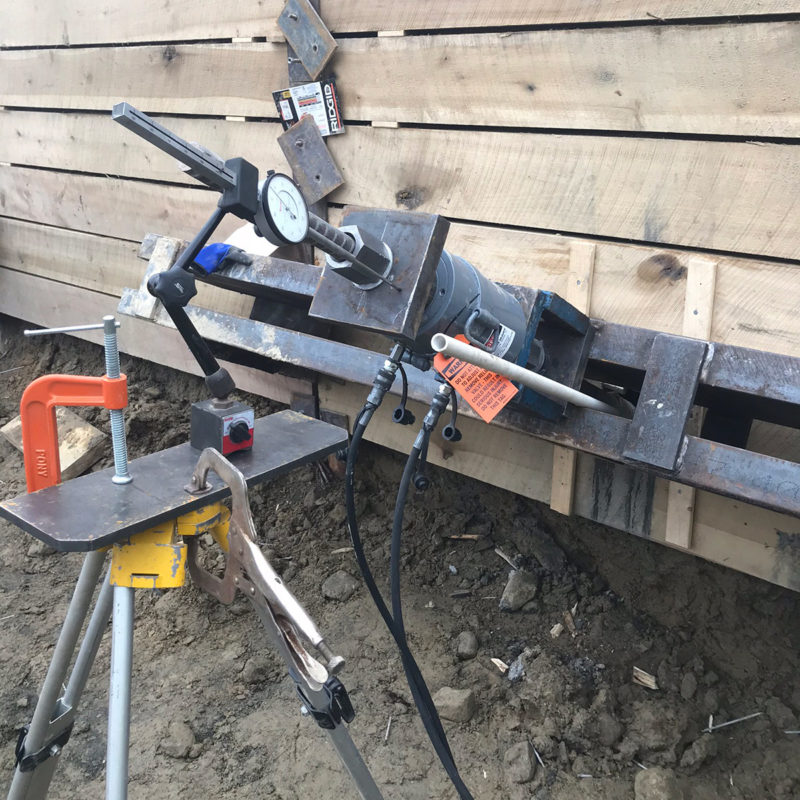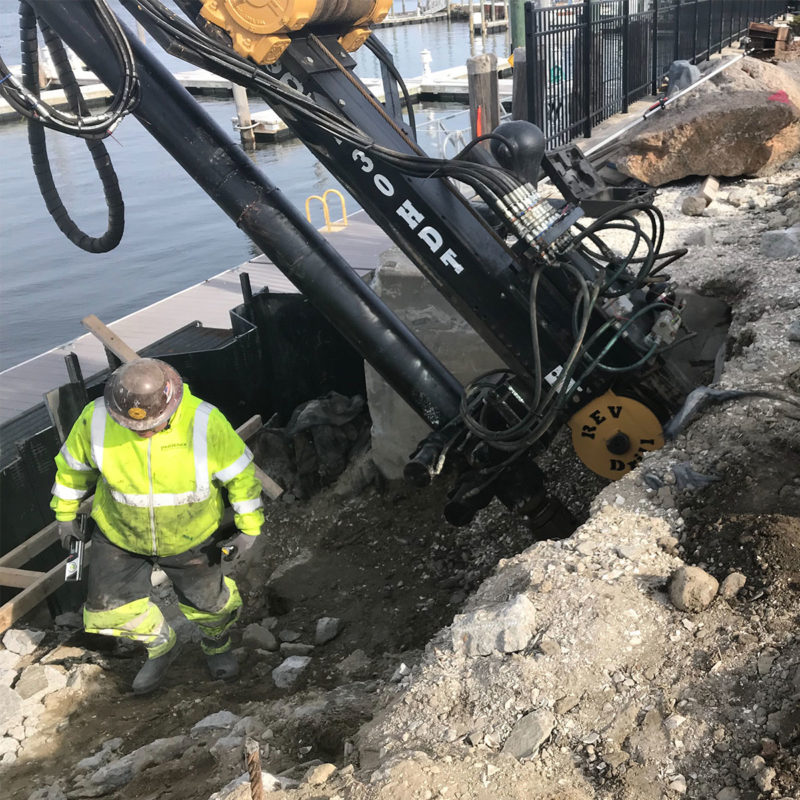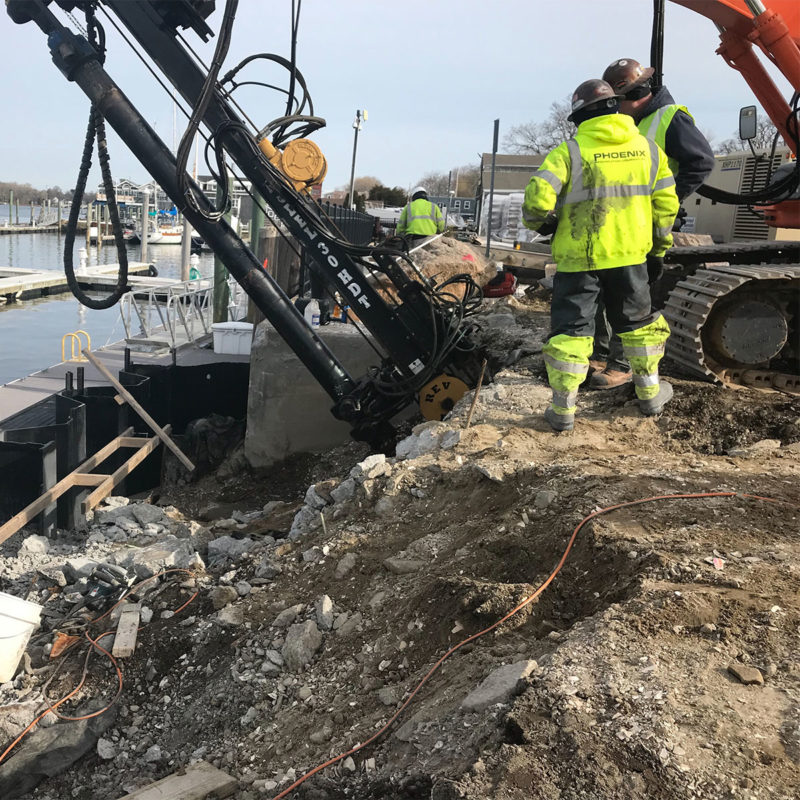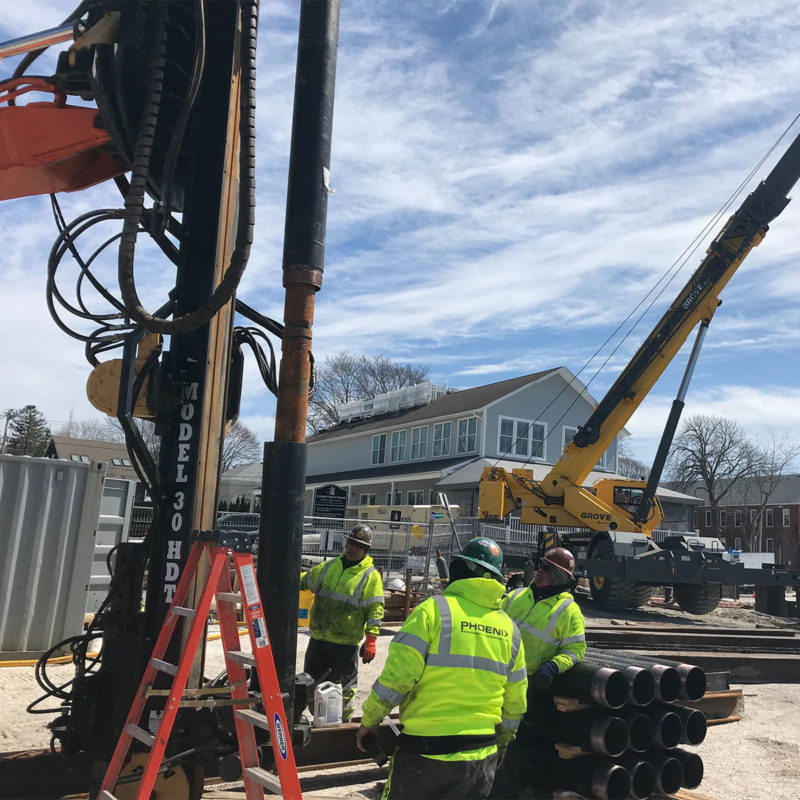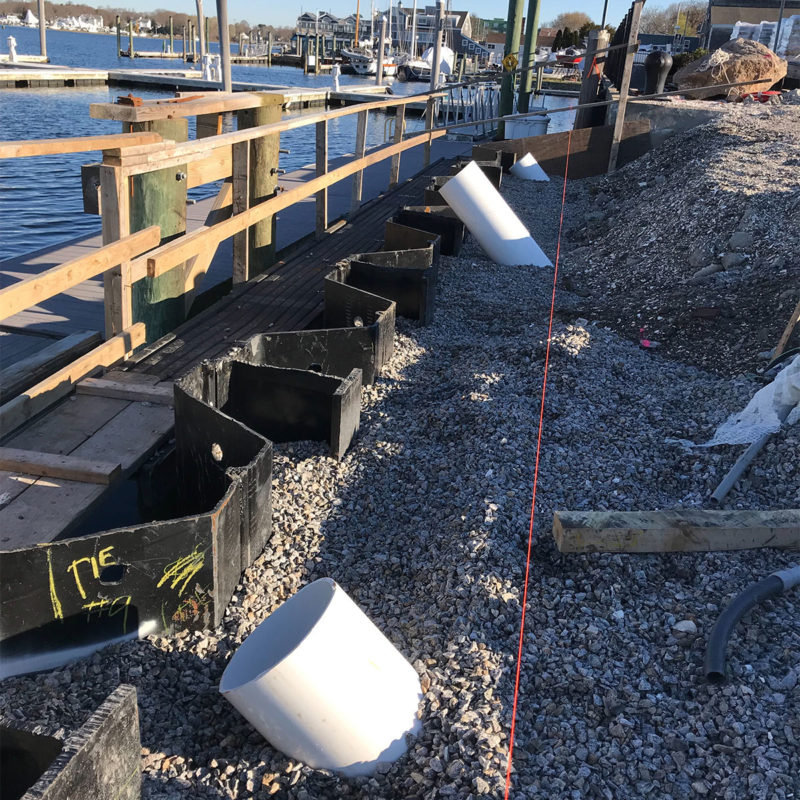External Bracing (Soil & Rock Anchors)
External bracing often relies upon the use of tiebacks, also known as soil or rock anchors. Tieback anchors are drilled through the face of the earth support system, and develop their capacity through a frictional bond between the soil/rock and the grouted borehole. This drill hole, after being extended to its required depth, is filled with a neat cement grout as well as a steel bar or tendon. After the cement grout has achieved its design strength (generally within 3 to 7 days), the anchor can be tensioned and locked off against the earth support system.
Anchors are commonly used to resist horizontal loads acting upon retaining walls, and are also used to resist uplift forces acting upon a foundation. Reinforcement elements in most cases consist of steel bars or strands, but other options such as fiberglass anchors are available if steel would be an obstruction to future excavations. Soil and rock anchors are utilized in a multitude of temporary and permanent applications.
Tiebacks are tension elements that provide lateral support to a variety of earth support systems and retaining wall structures including slurry walls, deep soil mix walls, steel sheeting, soldier piles and lagging, and new/existing concrete. The use of tiebacks to support deep excavations allows for efficient and cost-effective methods of excavation that would not be feasible with internal bracing.
A rock anchor is a tension element which is used to counteract uplift and overturning forces acting on foundation structures. Rock anchors are typically designed as active tension elements but can also be designed as passive systems. Rock anchors achieve their capacity through the frictional bond between the rock surface of a drilled hole and the cement grout placed into it. Rock anchors can achieve high loads (as seen in many dam projects) or smaller loads spread throughout a slab or foundation (as seen at many water treatment facilities).
Rock anchors are typically installed as permanent elements, and as such generally require one or more degrees of corrosion protection. The anchor tendon, which can be composed of either a single reinforcing bar or a multiple-strand, is often fully-encapsulated with a plastic corrugated sheathing. The annular space between the corrugated sleeve and the tendon is filled with cement grout. Within the free (or stressing) length, the manufacturer applies a greased sleeve over the tendon prior to grouting the anchor. This allows the upper portion of the tendon to move freely during stressing, enabling the stressing force to be transferred directly into the bond zone.
Typical Applications for External Bracing (Soil & Rock Anchors)
Foundation Support
Earth Support
Resistance to Uplift/Overturning Forces


